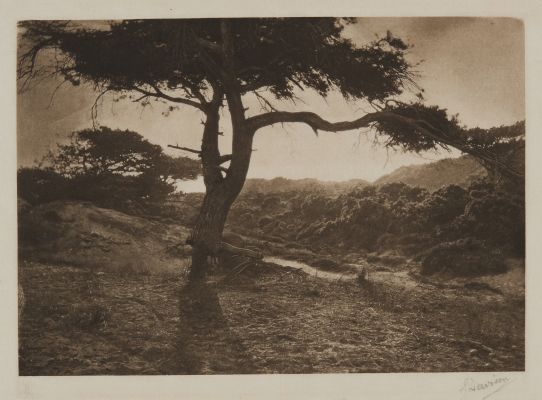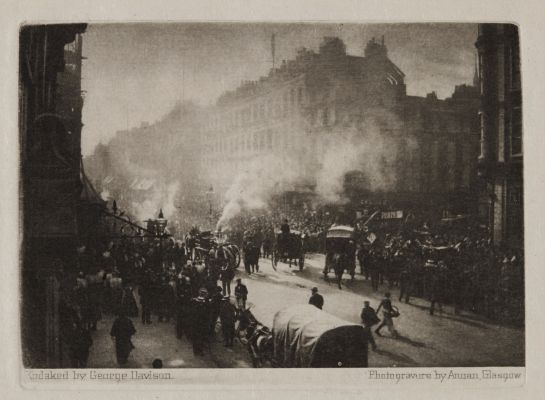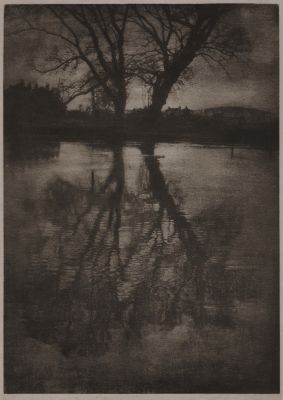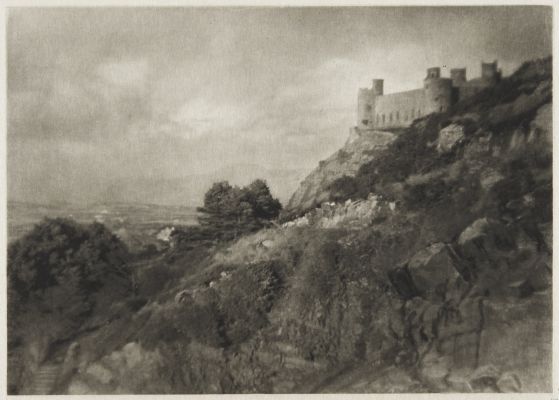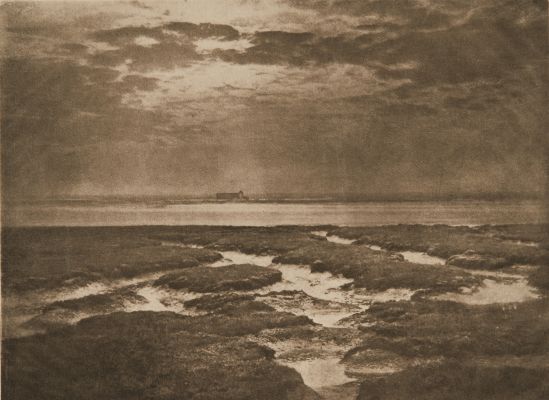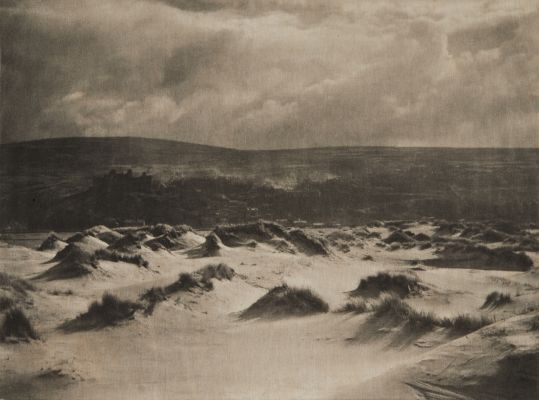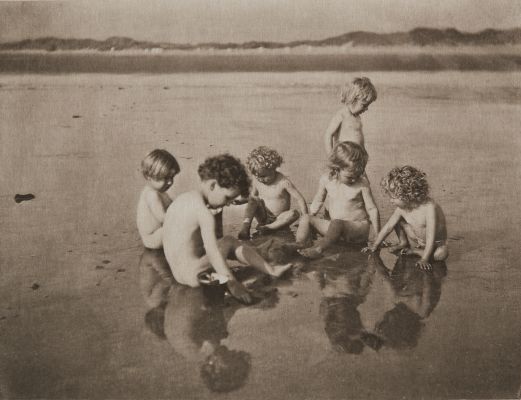
Title
Towards SnowdoniaArtist
Davison, George (British, 1854-1930)Date
1912 plate (1898 negative)Process
PhotogravureAtelier
James Craig AnnanImage Size
17.5 x 24.7 cmSheet Size
27.8 x 37.5 cm
George Davison was one of the most important figures in the development of Pictorial photography at the end of the nineteenth century. A founder member of The Linked Ring, he was a highly influential figure, exhibiting widely and writing extensively. His position as Managing Director of Kodak Ltd brought him affluence as well as influence. An advocate of Naturalistic photography and selective focusing, Davison initially espoused the ideas of P H. Emerson. However, their relationship soon deteriorated into a series of bitter exchanges published in the photographic press. Davison experimented widely with different techniques and processes in his efforts to achieve the impressionistic effect which he desired in his work. He was one of the first to use a pinhole camera for pictorial photography.
In 1898 he showed gum-bichromate prints for the first time and the following year he started what was to become an annual custom of sending photogravure reproductions of his photographs to his friends as New Year’s gifts. Inevitably, however, his output declined. In 1908, for the first time, the Photographic Salon contained none of his work. By this time, The Linked Ring had lost its original impetus and sense of unity. In 1910, it was agreed that no exhibition would be held, effectively marking the end of The Linked Ring. A group led by Davison formed the London Secession which held a single exhibition in May 1911. Davison exhibited a single print, of Harlech Castle. It was to be his last contribution to a photographic exhibition. By this time, Davison was preoccupied with other matters.
Undoubtedly stemming from his humble origins, Davison had a life-long interest in social reform. Although more of a committed Christian Socialist than an anarchist in the Marxist sense, he had been associated with anarchist organizations for several years. In 1908, George Eastman, considering him to be unsuited to the cut and thrust of commerce, asked Davison to resign as managing director of Kodak Ltd. Davison remained on the board of the company for a few years but his political activities had made his position untenable in Eastman’s eyes. In 1912 he was forced to resign his directorship, ending twenty-four years of association with the company. Davison moved to Harlech, North Wales, where his splendid house became a focus for artistic and political gatherings. As his health declined in the 1920s, he spent more time at his home near Antibes in the south of France, where he died in December, 1930. [1]
Davison had a close relationship with James Craig Annan who produced most of his photogravures.
References
[1] Harding, Colin (2008). "Davison, George (1854–1930)". In Hannavy, John (ed.). Encyclopedia of Nineteenth-century Photography. Vol. 1.
Harker, Margaret, The Linked Ring: The Secession Movement in Photography 1892–1910, Heinemann, 1979
Coe, Brian, George Davison: Impressionist and Anarchist in Mike Weaver, British Photography in the Nineteenth Century: The Fine Art Tradition, Cambridge University Press, 1989.
